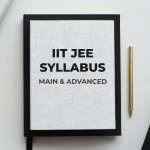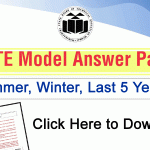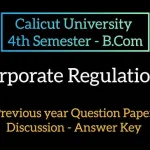Questions and Answers for ‘Fire and Ice’ by Robert Frost
Q: What is the central theme of the poem Fire and Ice?
A: The central theme of the poem is the destructive nature of human emotions like desire and hatred.
Q: What do fire and ice symbolize in the poem?
A: Fire symbolizes desire and passion, while ice represents hatred and indifference.
Q: How does Robert Frost convey his message through the poem?
A: Frost uses symbolism and contrasting imagery to depict how both desire and hate can lead to destruction.
Q: What poetic devices are used in Fire and Ice?
A: The poem uses symbolism, alliteration, enjambment, and paradox.
Q: How many lines are in the poem Fire and Ice?
A: The poem contains 9 lines.
Q: What kind of poem is Fire and Ice?
A: It is a short lyric poem.
Q: What is the rhyme scheme of Fire and Ice?
A: The rhyme scheme is ABAABCBCB.
Q: Who is the poet of Fire and Ice?
A: The poet is Robert Frost.
Q: What is the tone of the poem Fire and Ice?
A: The tone is contemplative and philosophical.
Q: What does the line “Some say the world will end in fire” imply?
A: It implies a belief that intense desire or passion can bring about the end of the world.
Q: What is meant by “ice” in the poem?
A: Ice metaphorically represents cold emotions such as hatred and apathy.
Q: Why does the poet say he holds with those who favor fire?
A: Because he has experienced the destructive power of desire and believes it could end the world.
Q: What is the poet’s final conclusion about how the world might end?
A: He concludes that either fire or ice could be sufficient to cause destruction.
Q: How does Frost make his point in such a short poem?
A: By using strong imagery and condensed language packed with meaning.
Q: Is Fire and Ice based on scientific ideas?
A: Partly, as it refers to theories of the world ending in fire or ice, but it’s mostly metaphorical.
Q: What is the deeper meaning behind the poem Fire and Ice?
A: It reflects on how human emotions can be as destructive as physical forces.
Q: How can the poem Fire and Ice relate to real life?
A: It shows how unchecked emotions like desire and hate can ruin relationships or societies.
Q: What is the poetic form of Fire and Ice?
A: It’s written in a single stanza with a simple structure.
Q: Why do some critics interpret Fire and Ice as a warning?
A: Because it cautions about the dangers of powerful emotions.
Q: How does Frost balance opposing ideas in the poem?
A: He treats both fire and ice as equally capable of destruction, showing duality in extremes.
Recommended Indian Books for ‘Fire and Ice’ Question-Answer Practice
-
Understanding Poetry: Fire and Ice – Class 10 Companion
Author: Meera Sharma
Publisher: Vidhya House Publications
Content Type: Includes line-by-line explanation, theme-based questions, MCQs, and sample board-type answers. -
CBSE English Master Guide – Fire and Ice Focus
Author: R. N. Pillai
Publisher: Evergreen Publishers
Content Type: Exam-centric short and long answer questions, poetic device identification, previous year board questions. -
Fire and Ice Workbook – Literature Made Easy
Author: Sulekha Menon
Publisher: Learn & Score Publishers
Content Type: Activity-based comprehension exercises, fill-in-the-blanks, literary appreciation, and teacher tips. -
Poetic Reflections – Fire and Ice Simplified
Author: Anjali Gupta
Publisher: New Leaf Publishers
Content Type: Thematic discussion, value-based questions, higher-order thinking questions (HOTS), and poetic elements. -
Explore English Literature – Fire and Ice Special Edition
Author: Deepak Joshi
Publisher: Wisdom Tree India
Content Type: Concept maps, summary notes, 2-mark and 4-mark answer frames, critical interpretation. -
Fire and Ice Demystified for Class 10
Author: Veena Dutt
Publisher: Navchetna Academic Press
Content Type: Objective and subjective Q&A, real-life connections to poem themes, and visual explanation charts. -
Mastering Poetry – Fire and Ice Intensive Practice
Author: Rahul Saxena
Publisher: EduSprint Publications
Content Type: Sample model answers, grammar integration, summary tables, and stanza-wise breakdowns. -
Score More in English – Fire and Ice Focus Book
Author: Kritika Malhotra
Publisher: Scholar’s Hub
Content Type: Writing prompts based on the poem, long answer writing drills, and CBSE-style assessments. -
Topper’s Guide to English Poetry – Fire and Ice Section
Author: A. K. Sinha
Publisher: Reliable Books India
Content Type: Topper-tested questions, thought-provoking reflections, metaphor and symbol analysis. -
Poetry Analysis for Class 10 – Fire and Ice Edition
Author: Sneha Rathi
Publisher: Bright Future Education
Content Type: Teacher’s corner, student worksheets, exam hacks, and answer-building techniques. -
English Literature Practice Book – Fire and Ice Focus
Author: Harshita Bhagat
Publisher: Sunrise Academic Press
Content Type: Revision questions, peer discussion prompts, opinion-based answers, and creative Q&A. -
Simplified English Literature for CBSE – Fire and Ice Explained
Author: Nikhil Khurana
Publisher: BrightMind Books
Content Type: Conceptual questions, exam-prep guides, literary tone analysis, and dual interpretations. -
Target 100% in English – Fire and Ice Special Guide
Author: Pallavi Verma
Publisher: SmartGrade Publications
Content Type: Precise answers for scoring high marks, diagram-based content, and personality-based value questions. -
Fire and Ice: Class 10 Literary Companion
Author: Ishita Sen
Publisher: Pathshala Series
Content Type: Comprehensive stanza analysis, poetic device drill sheets, critical reasoning sections. -
Fire and Ice – Express Yourself Workbook
Author: Yash Mehta
Publisher: EduPlus Books
Content Type: Journal-style reflective questions, group discussion topics, and sample presentations. -
CBSE Poetry Zone – Fire and Ice Practice Pack
Author: Tanvi Deshmukh
Publisher: Vision Academic Books
Content Type: Flashcards, quick recall quizzes, student self-checklists, and keyword summaries. -
Literature in Depth – Fire and Ice Focus Unit
Author: Bhavna Rajput
Publisher: New Era Books
Content Type: Line-by-line paraphrasing, HOTS questions, contrast comparisons, and theme essays. -
Engage with Poetry – Fire and Ice Interactive Guide
Author: Arvind Krishnan
Publisher: Young Scholars India
Content Type: Role-play and debate prompts, visual interpretation of poem, value-based scenarios. -
Fire and Ice for Curious Minds
Author: Priyanka Talwar
Publisher: MindBloom Academic Series
Content Type: Question banks, cause-effect analysis, real-life emotion mapping, and peer learning sheets. -
Think English – Fire and Ice Smart Revision Guide
Author: Kunal Oberoi
Publisher: Galaxy Academic Press
Content Type: Memory tricks, topic trees, poetic concept puzzles, and examiner-expectation tips.
Fire and Ice Question Answer – A Complete Guide for Students
Understanding the poem Fire and Ice by Robert Frost can be both fascinating and rewarding, especially when you dive into its deeper meaning and structure. As part of the Class 10 English curriculum, this short but powerful poem often appears in exams, making it essential to master common questions and answers.
The poem explores the idea of how the world might end—either in fire or ice—symbolizing human emotions like desire and hatred. Despite its brevity, the poem opens doors to many interpretations and insightful discussions. That’s why students preparing for board exams often look for structured fire and ice question answer guides to help them write with clarity and confidence.
When approaching questions from this poem, it’s important to focus on three key elements: theme, literary devices, and personal interpretation. Each of these plays a role in helping students score well.
What to Expect in Exams
Exam questions based on Fire and Ice often include both objective-type questions and subjective responses. You may be asked to identify poetic devices like symbolism, alliteration, or paradox, or to explain how emotions such as desire and hatred are metaphorically presented as fire and ice.
Short answer questions typically focus on:
-
Meaning of individual lines
-
Use of symbolism in the poem
-
Tone and mood
-
Rhyme scheme and structure
Long answer questions often ask you to:
-
Discuss the philosophical implications of the poem
-
Compare fire and ice as destructive forces
-
Reflect on how emotions can lead to disaster
How to Prepare Answers Effectively
To write high-quality answers, students should:
-
Use clear and concise language
-
Refer directly to lines from the poem
-
Include analysis of poetic techniques
-
Relate the poem’s message to real-life situations
Teachers often recommend answer framing using the RACE technique (Restate, Answer, Cite, Explain). For instance, if a question asks what “ice” represents, don’t just say “hatred.” Elaborate by saying it shows emotional coldness, a lack of empathy, and how such feelings can be equally destructive.
Expert-Backed Study Tips
-
Create Mind Maps – Visual aids help in connecting key ideas quickly.
-
Practice Model Answers – Write sample answers using past board questions.
-
Group Discussions – Share interpretations with peers for better understanding.
-
Use Flashcards – For quick recall of literary terms and meanings.
-
Voice Recordings – Record your own explanations and listen for revision.
Most importantly, always keep your answers aligned with the tone and depth expected in board exams. Avoid over-complication but don’t oversimplify either.
FAQ for fire and ice question answer
Q: What is the main theme of the poem Fire and Ice?
A: The main theme is the destructive power of emotions like desire (fire) and hatred (ice).
Q: What do fire and ice symbolize in the poem?
A: Fire symbolizes passion and desire, while ice represents coldness and hatred.
Q: What is the rhyme scheme of Fire and Ice?
A: The poem follows the rhyme scheme ABAABCBCB.
Q: Why is Fire and Ice considered a symbolic poem?
A: Because the poet uses elements of nature to represent human emotions metaphorically.
Q: How many lines are there in the poem?
A: There are 9 lines in total.
Q: Is Fire and Ice a narrative poem?
A: No, it is a lyric poem expressing personal feelings and philosophical thoughts.
Q: What poetic devices are used in Fire and Ice?
A: Symbolism, alliteration, paradox, and enjambment are key devices used.
Q: What does the poet favor more—fire or ice?
A: The poet leans slightly toward fire but acknowledges that both can be equally destructive.
Q: Why is the poem relevant to modern readers?
A: It addresses timeless human emotions and warns about their consequences.
Q: How should students approach long answer questions from this poem?
A: They should explain the poet’s message, analyze key lines, and provide thoughtful reflections.
Latest Posts
- Step-by-step guide to download and apply for jee mains admit card 202
- Comprehensive 2025 government holidays and recruitment details for job seekers
- JEE Mains Admit Card 2025: Your Step-by-Step Guide to Downloading the Hall Ticket
- Everything You Need to Know About 2025 Government Holidays Recruitment
- Comprehensive Guide to rrb d group recruitment 2025 – Eligibility, Vacancies, and Application
- Detailed guide to nps trust recruitment 2025 vacancies, eligibility and apply process
- Comprehensive guide to hpcl recruitment 2025 notification, vacancies, and application process
- ignou bed admission 2025 complete recruitment guide with eligibility and process
- Comprehensive Guide to Indian Army Agniveer Recruitment 2025 Notification and Jobs
- Everything You Must Know About CBSE Board Exams 2025 Changes & New Rules




